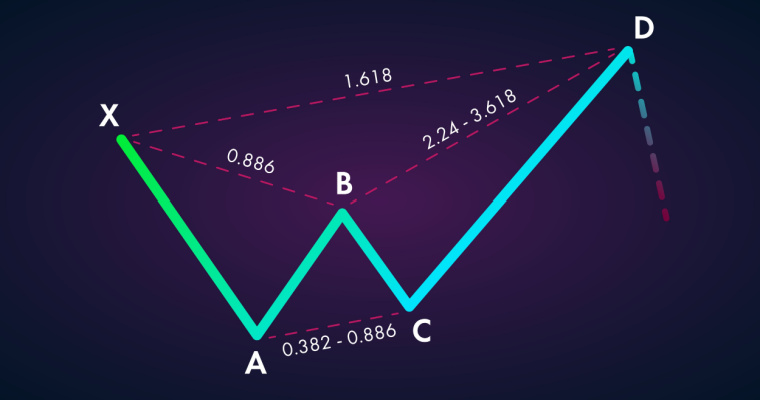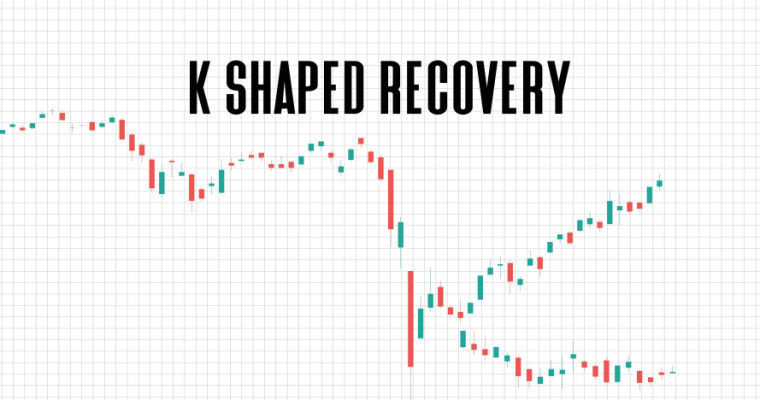Margin Trading – Definition, Working and Advantages

Simply put, in margin trading, you borrow money from a stockbroker to buy more stocks. In exchange, you have to deposit collateral to the brokerage firm or broker to cover the credit risk. Many stock brokers in India provide this service.
Let’s understand how margin trading works, its benefits and whether you should go for buying on margin.
What is Margin Trading?
Margin in the stock market refers to the money an investor has to deposit as collateral with the broker to borrow funds for trading purposes. The margin covers the credit risk taken by the lender. The word ‘buying on margin’ refers to buying securities with borrowed funds.
In margin trading, an investor borrows a sum of money from a broker, which facilitates trade in any financial asset of their choice. This asset acts as collateral against the amount borrowed from a broker.
Using margin, one can buy stocks, bonds and other financial assets beyond what one can afford. By using the facility to buy securities beyond what you can otherwise afford, you can take advantage of investment opportunities. However, a wrong bet can equally magnify one’s losses, so proper risk assessment is recommended.
Typically, margin trading or leverage trading involves buying and selling securities within a single day, i.e., intraday trading. Nowadays, many brokerages allow you to trade on margin for a longer time.
How Does Trading with Margin Work?
To buy securities on margin in the share market, one must first open an account with a margin trading facility (MTF) with a broker and pay a certain upfront fee. This margin account allows an investor to borrow funds to pay a part of an entire purchase. The broker will levy an interest over the disbursed funds and keep the stocks you buy as collateral.
The borrowing amount available from a margin account depends on the minimum margin that you deposit with the broker in cash. This margin can also vary depending on which assets one invests in using the borrowed funds. Depending on your broker and the asset or contract you wish to trade, a specific amount of margin will be allotted to you.
Here is a margin trading example – Imagine that you want to sell shares. In this scenario, you will receive 20% of the total value from your broker. The remaining 80%, you have to provide by yourself to make up for the full value of the stocks. You will have to put these up as collateral with the brokerage house to receive a loan.
During your loan tenure, you have the opportunity to place orders and make profits off of the loan amount. This amount will be settled depending on what happens earlier- your loan tenure ending or the closing of all open positions.
A settlement of profit and loss happens at the end of each trading day. You will have to pay a brokerage fee to your broker for availing the borrowing facility. Moreover, you have to maintain a certain minimum margin in the account, or your broker will square them off to recover losses.
Usually, only veteran traders practise this form of trading. They have a thorough understanding of the market functions and the risks of margin trading.
Pssst….want to put your money to work in a less-riskier investment vehicle than trading? Download the Navi app and explore a wide range of low-cost mutual funds. Select funds of your choice, relax and let your money do all the work. Risk? You can start with as low as Rs.10!
Disclaimer: Mutual Fund investments are subject to market risks, read all scheme related documents carefully.
Now back to margin trading. Let’s check out the eligibility criteria, shall we?
Also Read
Eligibility Criteria for Margin Trading
Access to a margin account is the primary requirement to take part in margin trading. While opening a margin account, you will be required to pay a minimum margin to cover the lender’s risks. If this balance drops, you will need to pay more to maintain your leveraged position. You will also need to pay a percentage of your leveraged trades as an initial margin.
On failure to maintain a minimum balance, your positions would get squared off. This can result in losses if the squaring off is executed automatically. Squaring-off is mandatory at the end of each trading session.
Margin Trading Features
These are a few features of margin trading:
- The opportunity to use cash or securities as collateral while margin trading offers investors the scope to leverage their positions against the margin requirement.
- According to the rules set by SEBI, only authorised brokers have permission to offer margin accounts to investors.
- Securities that are traded through MTF accounts are pre-defined by SEBI as well as the respective stock exchange.
- As market conditions prosper, there will be an increase in the margin from your collateral. This will provide you with a scope to stock up on more securities under MTF.
- Positions you create in the margin can be carried forward up to a maximum of N+T days. Here, N represents the number of days the position can be carried over (which tends to vary from broker to broker), and T denotes trading days.
How to Participate in Margin Trading?
To partake in the process of margin trading, investors need to open a Margin Trading Facility (MTF) account with their brokers.
MTF is a brokerage account that benefits investors wanting to buy stocks and other financial instruments using loans disbursed by an authorised broker.
So the rule of margin trading is that you will receive a loan in your MTF account by pledging collateral of securities purchased or cash (minimum margin). You will also need to pay interest in a periodic manner.
SEBI Regulations on Margin Trading
Before SEBI put forth new regulation in 2018, investors could only partake in margin trading through cash, and there was no option to incorporate shares as a means of collateral.
However, the 2018 rules set by SEBI brought a significant change by granting the investors a scope to leverage their market position by furnishing shares as security.
Benefits of Margin Trading
Some of the benefits of margin trading are:
1. Flexibility
There are no fixed repayment schedules for margin accounts. You just need to maintain the margin requirements of your broker by repaying the loan when your stock gets sold.
2. Leverage
The foremost benefit you will gain from margin trading is higher purchasing power. Buying securities just with a cash amount can be limiting. So, when you buy on margin, there’s always more possibility of owning more profitable shares.
3. Magnifies Profits
The main reason to opt for margin trading is that you will magnify your potential profit with the help of leverage. This, in turn, will increase the scope for you to buy on margin.
Risks Involved with Margin Trading
Here are some of the risks that an investor must keep in mind while margin trading:
1. Magnified Losses
Through margin trading, you will see that chances of incurring losses are as high as the chances of making a profit. Therefore, you might lose more than you invest in this form of trading.
If you believe that the process of borrowing from brokers and dealing with them is easy and uncomplicated, you might be making a mistake. The borrower is as bonded to the broker as they would be with banks.
2. Minimum Balance Requirement
It is mandatory for you to maintain a minimum balance in the margin trade account consistently. If you fail to keep up the minimum balance, even after your broker requested the same, you might have to sell off a particular portion of your assets to balance out the minimum amount in your account.
3. Liquidation
If a borrower fails to meet the margin trade agreement with his/her broker, he/she will have to endure whatever necessary action the broker takes. The broker has the power to liquidate their asset to recover the sum they failed to pay.
Margin Trading Best Practices Explained
Below are a few practices that investors can incorporate into their trading practices:
- As margin trading involves the factor of borrowing, there is a certain percentage of interest that investors need to pay on the borrowed amount. So, investors should focus on paying off the margin as early as possible. The more time they will take to pay off, the larger the interest amount will become.
- Another thing that the investors should follow is to avoid borrowing the entire permissible amount in one go. Once they gain enough experience and confidence in making profits, they can try using more margin.
- As the scope of profit and loss is equally present in trading, investors should ensure that they have enough cash to overcome the margin in case the market fails to provide them with estimated returns.
Also Read
Final Word
Gaining ample experience in trading and understanding how the market functions is necessary to be successful with margin trading. Once you have entirely grasped the process’s ins and outs and associated risks and costs, you can successfully reap its benefits.
Margin trading has a significant amount of potential to increase your overall profits and return on investments. It will also present you with better opportunities to invest in a more excellent range of securities.
FAQs
Ans: A margin call happens when you fail to maintain the minimum required balance in your account. This is when the broker will ask you to add more funds to the account or risk having your assets liquidated at a loss to recover the outstanding amount.
Ans: Customers can carry forward their positions as long as they maintain the minimum margin amount in their account. The maximum number of days they can trade on margin is decided by an individual stockbroker.
Ans: Utilisation of margin in the share market must be in moderation. Not incorporating more than 10% of your asset value is advisable.
Ans: To repay a margin loan, there is no structured schedule that you have to follow. Monthly interest charges will ensue in your account, and you can conveniently pay off the principal amount.
Ans: No, a margin account does not affect your credit score as it doesn’t come under the components that have the power to impact your credit score.
Want to put your savings into action and kick-start your investment journey 💸 But don’t have time to do research? Invest now with Navi Nifty 50 Index Fund, sit back, and earn from the top 50 companies.
Disclaimer: Mutual Fund investments are subject to market risks, read all scheme-related documents carefully.
This article has been prepared on the basis of internal data, publicly available information and other sources believed to be reliable. The information contained in this article is for general purposes only and not a complete disclosure of every material fact. It should not be construed as investment advice to any party. The article does not warrant the completeness or accuracy of the information and disclaims all liabilities, losses and damages arising out of the use of this information. Readers shall be fully liable/responsible for any decision taken on the basis of this article.

Customer’s Feedback
No comments found.Illiquid Stocks Guide: Definition, Examples, and its Working
Illiquid stocks are part of a long-term investment strategy that is appropriate for investors who a... Read More »What is Shooting Star Candlestick Pattern in Trading?
The shooting star candlestick pattern is considered to be a bearish reversal candlestick ... Read More »What is VWAP Indicator and How to Use it for Trading
The VWAP indicator shows the volume-weighted average market price of a particular stock. You can us... Read More »What is Price Action Trading: Its Strategy, Stop Loss and Profit Targets
Price action trading is a methodology in which the trader solely relies on analysing a security’s... Read More »What is Buy the Dip Strategy in Trading – Working and Example
‘Buy the dip’ is one of the most common phrases in the stock market. It is sort of a go-t... Read More »What is the Black Scholes Model – Formula, Calculation and Assumptions
Among the important concepts in modern financial theory, the Black Scholes model, developed in 1973... Read More »What is Iron Condor and What are its Strategies?
Iron Condor is an options trading strategy that involves four options with the same expiration date... Read More »What is Harmonic Pattern and How Does it Help in Trading?
Harmonic patterns are one of the most efficient and effective trading patterns. Although they are m... Read More »What is a Contract Note and Why is it Important?
Contract note is a legal document containing the details of every stockbroker's trade on a stock ex... Read More »What is K-shaped Recovery: Indication, Example and
Economies go through multiple phases in business cycles. One such phase is a recession which is mar... Read More »Guide to Book Building – Its Types, Benefits and Process
Initial public offerings (IPOs) are priced as specified by their underwriters. The process by which... Read More »Support and Resistance in Trading: Working, Strategies, Uses and Example
Support and resistance are two of the most significant and practical concepts in technical analysis... Read More »Top 10 Chit Fund Schemes in India in 2023
Chit funds are one of the most popular return-generating saving schemes in India. It is a financial... Read More »10 Best Gold ETFs in India to Invest in April 2023
Gold ETFs or Gold Exchange Traded Funds are passively managed funds that track the price of physica... Read More »10 Best Demat Accounts in India for Beginners in 2023
Creation of Demat accounts revolutionised the way trades were conducted at the stock exchanges. It... Read More »20 Best Index Funds to Invest in India in April 2023
What is an Index Fund? An index fund is a type of mutual fund or exchange-traded fund (ETF) that... Read More »Best Arbitrage Mutual Funds to Invest in India in April 2023
Arbitrage funds are hybrid mutual fund schemes that aim to make low-risk profits by buying and sell... Read More »10 Best SIP Plans in India to Invest in April 2023
What is SIP? SIP or Systematic Investment Plan is a method of investing a fixed amount in ... Read More »10 Best Corporate Bond Funds in India to Invest in April 2023
Corporate bond funds are debt funds that invest at least 80% of the investment corpus in companies ... Read More »10 Best Bank for Savings Account in India [Highest Interest Rate 2023]
Savings account is a type of financial instrument offered by several banks. It lets you safely depo... Read More »


































